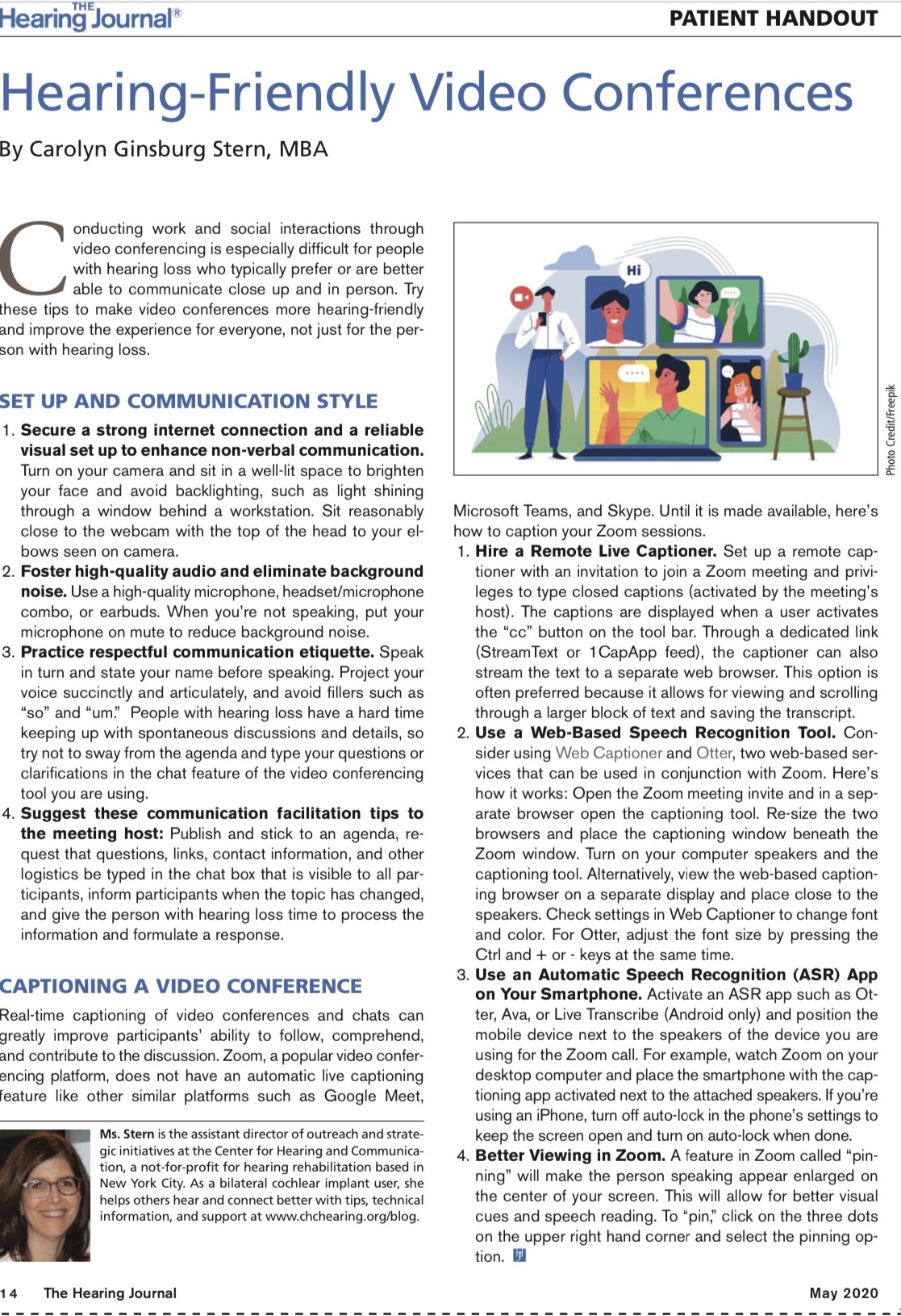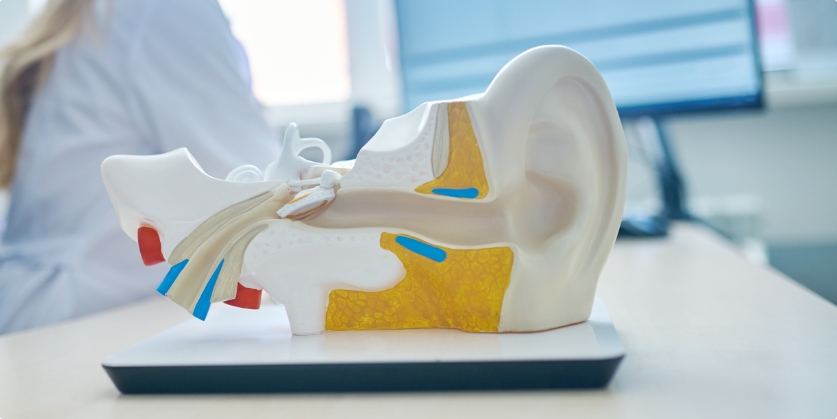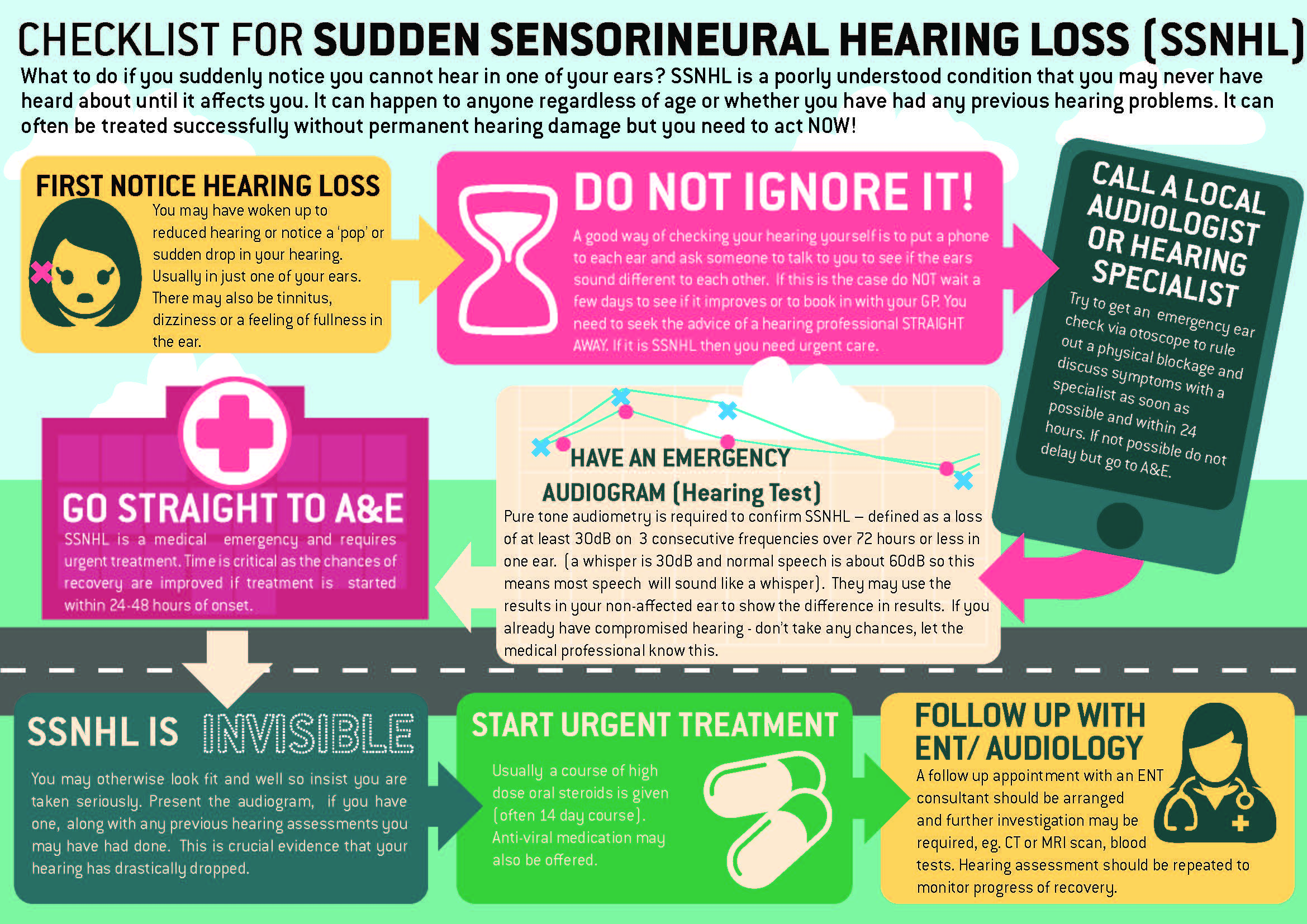
HEAR WELL. STAY VITAL.
Truths & Myths
Myth: I don’t need hearing aids. My hearing is mostly fine.
When you have a hearing loss in some frequencies and not others, it is easier to dismiss it as unimportant. Even a mild hearing loss can adversely affect your cognitive capabilities, work, home, and social life. Fortunately, the brain’s neuroplasticity means that treating hearing loss allows the brain to relearn how to hear. Proper hearing aid use correlates with improved outlook, mood, mobility, independence, communication, and social interaction.1
Myth: Hearing loss is only in my ears.
Untreated hearing loss increases risk of cognitive decline, dementia, falls, social isolation, and depression. It’s theorized that the “cognitive load” on the brain may take away resources the brain uses for other functions, such as short-term memory, and affects our ability of spatial awareness. Researchers cite treating hearing loss with hearing aids can alleviate symptoms of these conditions.2
Myth: Hearing aids are like eyeglasses.
Hearing and vision are both major senses and hearing aids and eyeglasses are frequently compared. But in reality, comparing hearing aids to eyeglasses is vastly different. Eyeglasses are a mechanism to immediately assist the eye to focus and do not require vision training to wear them. Hearing aids are responsible for helping the brain perceive pitch, duration, loudness, timbre, sonic texture and spatial location of sounds. Sounds can tell us where things are, if they are moving, how far or near an object may be, and more. Sound waves travel through a medium, such as air or water, and are captured by our ears and perceived by our brain as a sound. Sound also gives us the ability to communicate and understand spoken language. With hearing aids, the brain needs time to adjust to the sound coming through the hearing instrument. Because of each individual’s unique ability to hear various frequencies, hearing aids need to be programmed to a patient’s hearing ability. Fine-tuning may take several trips to the audiologist or hearing healthcare professional. Even the most advanced hearing aids will not restore hearing 100 percent and individuals may need auditory training to help the brain process sounds.3
Truth: Hearing health is overall health.
Hearing occurs in the brain. The pathway to signal transmission and comprehension is quite complex. Hearing loss due to injury, illness, excessive sound, and aging affects our brain health and puts us at increased risk of cognitive decline. It also affects our physical health with an increased risk of falls and our mental health with an increased risk of depression and social isolation. Hearing loss is connected to diabetes and heart disease.
Truth: On average, people wait 5 to 7 years before seeking help for their hearing loss.4
Five to seven years is a very long time to have to struggle with your hearing. Why do people wait that long? There are many reasons why people live with hearing loss. Fewer than 16 percent of family doctors test for hearing loss. Hearing loss is so gradual that it’s hard to notice. Hearing loss frequently occurs for higher pitched sounds, which means some lower pitched sounds and voices may be heard normally, creating the perception of normal hearing. Many people assume hearing loss is age-related and it’s either something to be accepted or something to be ashamed of. Annual hearing testing may help those with hearing loss gain a quicker diagnosis, treatment, and benefit from hearing aids that come in a number of different colors and styles.
Myth: Hearing loss affects only older adults.
Hearing loss does not discriminate. About two-thirds of all hearing loss is in people under 65 years of age.5 Even more alarming is that today 1 in 5 teenagers (ages 12 – 19) have hearing loss in one or both ears from high levels of sound that can be delivered by earbuds, from illness, medications or genetics. The World Health Organization has warned that 1.1 billion teenagers and young adults are at risk of hearing loss “due to the unsafe use of personal audio devices, including smartphones, and exposure to damaging levels of sound at noisy entertainment venues such as nightclubs, bars, and sporting events."6
Truth: Tiny hairs in ears can affect hearing loss.
Tiny hairs in the inner ear play a huge part in the hearing process. Located inside the cochlea, these hair cells rock back and forth with the vibration of a sound and turn the vibration into electrical signals that help our brain understand the sound.7 These tiny hairs are fragile and once damaged, they cannot grow back. If sounds are too loud then the hair cells are damaged and stop transmitting sound. Damage can occur by not protecting ears from excessive sound. Wearing ear protection while doing yard work, avoiding raising the volume on head phones or sitting close to sound projection at concerts are all self-protective measures.
Myth: Excessive noise won’t cause hearing loss.
Any sounds above 85 decibels for an extensive time can contribute to permanent noise-induced hearing loss. What does that mean? To put that into perspective, a typical conversation is around 60 decibels and is unlikely to damage your hearing. A hair dryer or a power lawnmower is 90 decibels, while an ambulance siren is 120 decibels. Regular and prolonged unprotected exposure above 85 decibels is considered hazardous. Noise-induced hearing loss can occur in work environments, like manufacturing, loud equipment, in construction and more. The louder the sound, the shorter the amount of time it takes for hearing loss to occur.
Myth: Hearing loss is unavoidable with age.
Hearing loss has many causes, including genetics, certain medications, and exposure to loud noises. Smoking and diabetes also can lead to hearing impairment. Like skin damage from sun exposure, the cumulative effect of today’s loud societies has led to a greater incidence of hearing loss that becomes increasingly apparent over a lifetime—that is, in older adults. Noise exposure is the most preventable cause of hearing loss.
Truth: Headphones or hearables can lead to permanent hearing loss.
According to a 2011 study published in the Journal of the American Medical Association, the prolonged use of headphones and earbuds has led to a major increase in the prevalence of hearing loss in adolescence and young adults. Having the source of the sound in your ear canal can increase a sound's volume by 6 to 9 decibels — enough to cause some serious problems. Not only can the inner ear be damaged by the loudness of noise, but it can also be damaged by the length of exposure. If the ear is not given enough time to recover between noise exposure, permanent damage can occur.
Truth: More than 200 medications can cause hearing loss
Here’s a little-known fact: specific medications can harm the ear, causing hearing loss, ringing in the ear, or balance problems. These medications are considered ototoxic. In fact, there are more than 200 identified ototoxic medications. To check on your medications, go to www.drugs.com.
Myth: But I love music. It’s not harmful.
In one of the largest studies ever performed on hearing disorders affiliated with musicians, researchers discovered that musicians are 57 percent more likely to suffer from tinnitus—consistent ringing in the ears—as a result of their jobs.8 If you’re a musician, or if you participate in live events, safeguard your ears. Some 1.1 billion teenagers and young adults are at risk of hearing loss due to the unsafe use of personal audio devices, including smartphones, and exposure to damaging levels of sound at noisy entertainment venues such as nightclubs, bars and sporting events.9Musicians benefit from professional earplugs that provide safe listening and preserve sound quality.
Myth: It’s not me. I’m not old enough to have hearing loss.
Of the 48 million individuals who have hearing loss in the US, it’s common to presume that the vast majority are old. But the truth is the reverse. For those troubled with hearing loss in the US, approximately 62 percent are younger than 65. In fact, 1 in 6 baby boomers (ages 55-73), 1 in 14 Generation Xers (35-54), 1.4 million children (18 or younger), and 2-3 out of 1,000 infants have some form of hearing loss.10
References:
1 https://
2 https://www.healthyhearing.
3 https://
5 https://
6 https://www.who.int/news-
7 https://www.nidcd.nih.gov/
8 https://www.aarp.org/health/
9 https://www.who.int/news-
10 https://hearingmatters.biz/
HEAR WELL. STAY VITAL. © 2019


